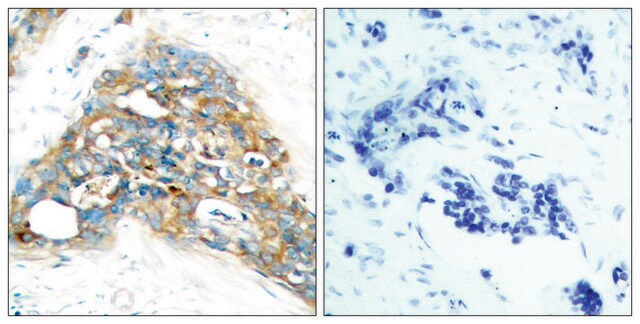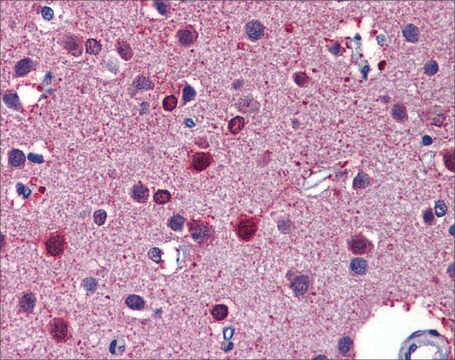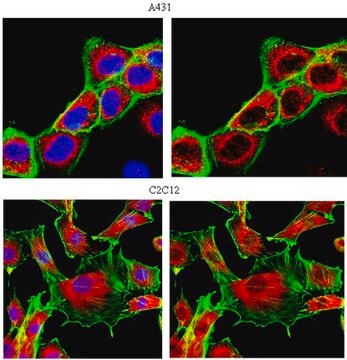SAB4502581
Anti-Retinoic Acid Receptor β, C-Terminal antibody produced in rabbit
affinity isolated antibody
Sinonimo/i:
HBV-activated protein, RAR-β, RAR-ε, nuclear receptor 1B2, retinoic acid receptor β
About This Item
Prodotti consigliati
Origine biologica
rabbit
Livello qualitativo
Coniugato
unconjugated
Forma dell’anticorpo
affinity isolated antibody
Tipo di anticorpo
primary antibodies
Clone
polyclonal
Stato
buffered aqueous solution
PM
antigen 50 kDa
Reattività contro le specie
mouse, human
Concentrazione
~1 mg/mL
tecniche
ELISA: 1:20000
immunohistochemistry: 1:50-1:100
western blot: 1:500-1:1000
N° accesso NCBI
N° accesso UniProt
Condizioni di spedizione
wet ice
Temperatura di conservazione
−20°C
modifica post-traduzionali bersaglio
unmodified
Informazioni sul gene
human ... RARB(5915)
Categorie correlate
Descrizione generale
Immunogeno
Immunogen Range: 331-380
Azioni biochim/fisiol
Mutation in the gene is associated with the development of anophthalmia and/or microphthalmia and diaphragmatic hernia. RARβ gene inactivation caused by RARβ methylation contributes to the pathogenesis of non-small cell lung cancer (NSCLC) and acts as a potential biomarker, risk factor and therapeutic target for NSLC.
Caratteristiche e vantaggi
Stato fisico
Esclusione di responsabilità
Non trovi il prodotto giusto?
Prova il nostro Motore di ricerca dei prodotti.
Codice della classe di stoccaggio
10 - Combustible liquids
Classe di pericolosità dell'acqua (WGK)
nwg
Punto d’infiammabilità (°F)
Not applicable
Punto d’infiammabilità (°C)
Not applicable
Scegli una delle versioni più recenti:
Certificati d'analisi (COA)
Non trovi la versione di tuo interesse?
Se hai bisogno di una versione specifica, puoi cercare il certificato tramite il numero di lotto.
Possiedi già questo prodotto?
I documenti relativi ai prodotti acquistati recentemente sono disponibili nell’Archivio dei documenti.
Global Trade Item Number
| SKU | GTIN |
|---|---|
| SAB4502581-100UG | 4061837190292 |
Il team dei nostri ricercatori vanta grande esperienza in tutte le aree della ricerca quali Life Science, scienza dei materiali, sintesi chimica, cromatografia, discipline analitiche, ecc..
Contatta l'Assistenza Tecnica.








